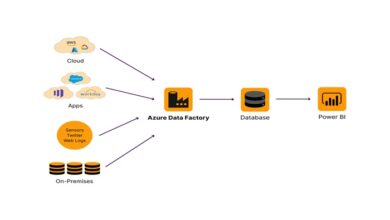The ROI of Microsoft Power Platform for SMEs: Why it’s not just for enterprises

Microsoft Power Platform has transformed the way organisations adopt digital transformation by offering an array of applications that allow companies to analyse data, develop solutions, automate business processes, and design virtual agents. Although large corporations were quick to adopt it, small and medium enterprises (SMEs) have also found their value in generating considerable returns on investment without the need for huge IT departments or expenses.
These all work together fluidly as an integrated set of tools—Power BI, Power Apps, Power Automate, and Power Virtual Agents—to help change the nature of business functions. The power is in seeing how these individual applications work and integrate with each other and already established Microsoft systems, such as Office 365 and Dynamics 365, to form a system that best utilises efficiency and productivity within and across an enterprise of any size.
Shattering cost barriers for SMEs
Historically, business intelligence solutions and custom software development were accompanied by exorbitant price tags that only large enterprises could afford. The Power Platform disrupts this status quo by providing consumption-based pricing models that grow with your business requirements. This means SMEs can begin small and scale their usage as they expand without substantial initial investments.
Such tools’ no-code/low-code aspect significantly decreases development expenses that otherwise pose barriers to smaller organisations. Solutions that took months with teams of developers can now be developed in days or weeks by current staff who are familiar with the business processes, even without heavy technical backgrounds, making digital transformation possible for resource-constrained companies.
Empowering citizen developers
Perhaps the Power Platform’s strongest feature is how it democratises application development via its ease-of-use interface and visual development toolset. This gives “citizen developers” — business users who are familiar with business requirements but do not have conventional coding capabilities — the ability to build solutions to their particular departmental needs without always having to turn to IT or outside consultants.
When assessing the potential ROI, factor in the worth of letting your team develop its own solutions. Having a Microsoft Power Platform consultant on board for initial deployment can set up governance patterns and best practices that enable your team to develop solutions securely while upholding security and compliance standards that guard your business data and systems.
Quantifiable time savings through automation
Hand processing leeches away productivity and inserts human error into core business operations. Power Automate enables SMEs to uncover repetitive tasks and design automated flows that run continually without human participation. These gains find direct paths to the bottom line as staff spend more time on high-value tasks instead of drudgery like data entry or document processing.
Research indicates that workers spend as much as 30% of their time on repetitive, administrative work that can be automated. Through Power Automate solutions, organisations can generally eliminate as much as 15-30% of this lost time, resulting in great cost savings in labour. For a business of 50 workers, this could mean reclaiming thousands of hours of productive time a year.
Improving decision-making with data insights
Power BI revolutionises how SMEs know their business by offering robust data visualisation and analytics capabilities that were once costly business intelligence solutions. Quicker access to actionable insights empowers more informed decision-making at all organisational levels, from frontline managers to executive management, driving competitive advantages in fast-evolving markets.
The ROI of enhanced data visibility is typically seen in lower inventory costs, better marketing expenditure, improved sales efficiency, and enhanced resource allocation. Organisations reporting on Power BI indicate they make decisions 2-5 times quicker than they did prior to implementation, with increased confidence in the result because of data-driven insights as opposed to a guess or partial set of information.
Shortening development cycles with Power Apps
Custom app development used to take months of effort and expertise. Power Apps allows SMEs to develop effective, professional applications in days or weeks. This radical speedup allows business issues to be solved promptly and opportunities to be grabbed before they slip away, with concrete benefits in competitive markets.
A standard custom application on classic platforms costs around $40,000 to $250,000, depending on the complexity. For comparison, Power Apps solutions generally have 70-80% less to build and maintain while providing similar functionality. The cost disparity is an immediate ROI without even accounting for the business value the applications deliver once they’re live.
The Microsoft Power Platform is a democratisation of technology on the level of enterprises, which equalises the field for SMEs compared to larger businesses. Supporting fast, cost-efficient digital transformation gives an unparalleled return on investment through productivity gains, enhanced decision-making, and customer engagement without necessitating huge initial capital expenditures or professional technical teams.
With more business spaces becoming digital and competitive, small and medium-sized enterprises using such tools gain key benefits compared to outdated methods. Its scalability allows businesses to begin with pinpointed solutions to tackle precise sore spots and ramp up their adoption as the entity develops and grows, rendering it an optimal investment for technology-conscious small- and medium-scale enterprises.



